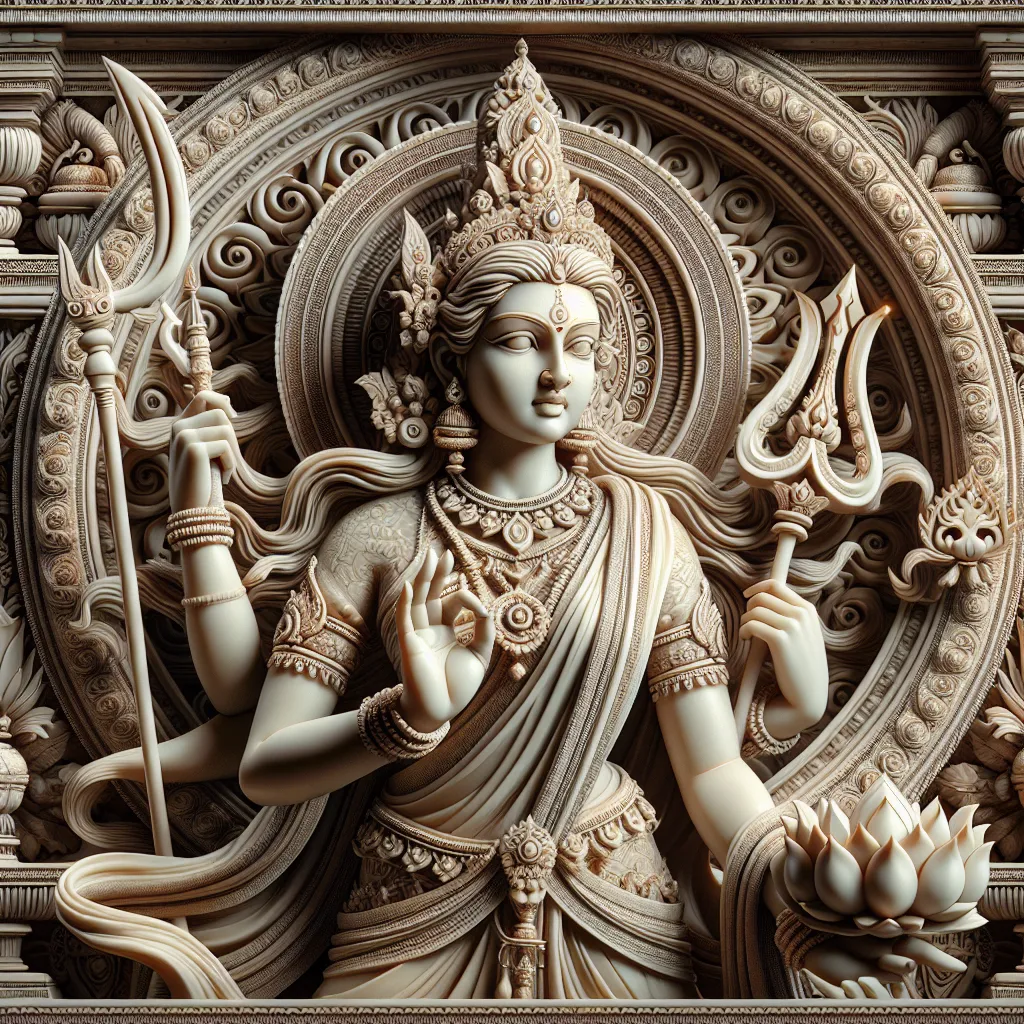
- Published on
- Authors

- Name
- You
Devi: The Divine Feminine in Hinduism
The concept of Devi, the Divine Feminine, has been a cornerstone in Hinduism, embodying various aspects of the universe, from creation to destruction, benevolence to terror. This exploration delves into the myriad forms and manifestations of Devi, such as Durga, Kali, Lakshmi, and Saraswati. By interweaving modern scientific understanding with age-old mystical wisdom, we can gain a holistic appreciation of these deities.
The Divine Feminine: An Interdisciplinary Perspective
The idea of the Divine Feminine resonates deeply across different cultures and epochs, acting as a potent symbol of power, nurturing, and transformation. From the latest studies in quantum physics to the age-old Vedas, a universal truth emerges—energy, at its core, is both creative and destructive, feminine and masculine.
Consider the following table for a simplified comparison:
| Element | Science Perspective | Mystical Perspective |
|---|---|---|
| Energy | Quantum Fluctuations | Shakti (Divine Energy) |
| Creation | Big Bang Theory | Divine Genesis via Devi |
| Destruction | Entropic Processes | Kali's Dance of Destruction |
| Nurturing | Evolutionary Biology | Lakshmi's Abundance |
Manifestations of Devi
Durga: The Warrior Goddess
Durga symbolizes strength and protection. Often depicted riding a lion or tiger, she combats evils and demonic forces threatening the cosmic order. Her mythology underscores the importance of resilience and righteous warfare.
Scientific Parallel: Durga's multi-armed form can be likened to multitasking capabilities in modern artificial intelligence systems, emphasizing the need for diverse approaches to problem-solving.
Kali: The Fierce Protector
Kali, often depicted with a garland of skulls and a bloodied sword, represents the fierce aspect of the Divine Feminine. She personifies destruction but also the endless cycle of death and rebirth, making room for renewal.
Scientific Parallel: Kali’s role as a destroyer resonates with nuclear science, where atoms must be split (destroyed) to release immense energy, symbolizing the transformative power of controlled destruction.
Lakshmi: The Goddess of Wealth
Lakshmi is the deity of wealth, fortune, and prosperity. Traditionally worshipped during Diwali, she ensures both material and spiritual abundance.
Scientific Parallel: Lakshmi’s attributes can be paralleled with ecological economics, focusing on sustainable growth and resource management for long-term prosperity, mirroring how wealth, when wisely used, results in holistic wellbeing.
Saraswati: The Embodiment of Knowledge
Saraswati is the goddess of knowledge, music, and the arts. She is often depicted with a veena, representing the harmony of cosmic vibrations.
Scientific Parallel: Saraswati’s attunement with knowledge aligns with information theory in computer science, where efficient communication and data processing form the backbone of modern technology.
The Intersection of Science and Mysticism
The convergence of advanced science and mystical wisdom illuminates a deeper understanding of the universe and our place within it. Modern practices like mindfulness and meditation draw heavily from ancient spiritual traditions, bridging the gap between empirical research and experiential understanding.
Conclusion
By exploring the rich tapestry of Devi through both scientific and mystical lenses, we garner a more nuanced appreciation of these divine manifestations. Durga, Kali, Lakshmi, and Saraswati are not merely mythological figures but also embodiments of universal principles that resonate with contemporary scientific insights.
Whether one views them through the prism of faith or the lens of science, the Divine Feminine in Hinduism offers profound lessons on the nature of existence, the balance of energies, and the endless dance of creation and destruction.
